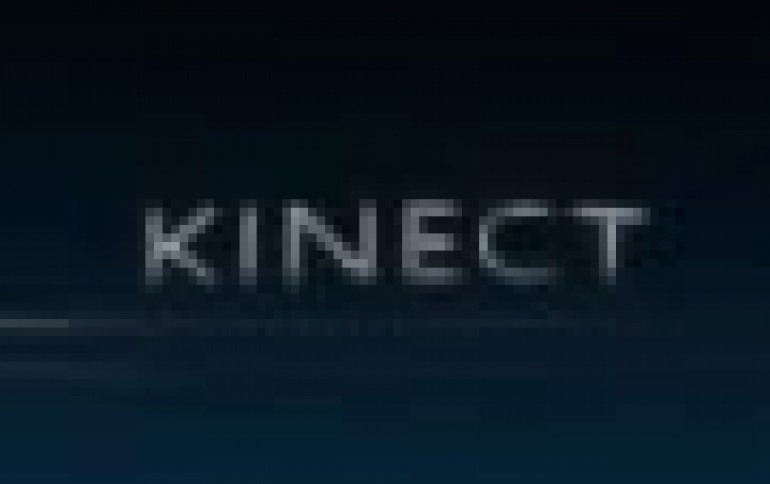
New Kinect for Windows Sensor is Coming Next Year
On Thursday Microsoft announced it will deliver a new generation Kinect for Windows sensor next year, offering businesses access to natural technology and hoping that they will develop and deploy touch-free applications for their customers.
Microsoft says the new Kinect for Windows sensor offers precision and responsiveness. Key capabilities include higher fidelity, expanded field of view, improved skeletal tracking, and new active infrared.
The all-new active-infrared capabilities allow the new sensor to work in nearly any lighting condition. This makes it possible for developers to build apps with enhanced recognition of facial features, hand position, and more.
The new sensor includes a high-definition (HD) color camera as well as a new noise-isolating multi-microphone array that filters ambient sounds to recognize natural speaking voices even in crowded rooms. Also included is Microsoft?s proprietary Time-of-Flight technology, which measures the time it takes individual photons to rebound off an object or person to create high accuracy and precision. All of this means that the new sensor recognizes precise motions and details, such as slight wrist rotation, body position, and even the wrinkles in your clothes. The Kinect for Windows community will benefit from the sensor?s enhanced fidelity, which will allow developers to create highly accurate solutions that see a person?s form better than ever, track objects and environments with greater detail, and understand voice commands in noisier settings than before.

The expanded field of view accommodates a multitude of differently sized rooms, minimizing the need to modify existing room configurations and opening up new solution-development opportunities. The combination of the new sensor's higher fidelity plus expanded field of view will give businesses the tools they need to create natural computing experiences such as clicker-free presentation scenarios, more dynamic simulation and training solutions, up-close interactions, more fluid gesture recognition for quick interactions on the go, and much more.
The new sensor also tracks more points on the human body than previously, including the tip of the hand and thumb, and tracks six skeletons at once. This not only yields more accurate skeletal tracking, it opens up a range of new scenarios, including improved "avateering," the ability to develop enhanced rehabilitation and physical fitness solutions, and the possibility to create new experiences in public spaces - such as retail - where multiple users can participate simultaneously.
The all-new active-IR capabilities allow the new sensor to work in nearly any lighting condition and, in essence, give businesses access to a new fourth sensor: audio, depth, color?and now active IR. This will offer developers better built-in recognition capabilities in different real-world settings?independent of the lighting conditions?including the sensor?s ability to recognize facial features, hand position, and more.
Microsoft will share more details about the new Kinect for Windows Sensor at BUILD 2013 in June. Developers will also get the SDK (software development kit), from which human-computer interaction programs can be written.
The all-new active-infrared capabilities allow the new sensor to work in nearly any lighting condition. This makes it possible for developers to build apps with enhanced recognition of facial features, hand position, and more.
The new sensor includes a high-definition (HD) color camera as well as a new noise-isolating multi-microphone array that filters ambient sounds to recognize natural speaking voices even in crowded rooms. Also included is Microsoft?s proprietary Time-of-Flight technology, which measures the time it takes individual photons to rebound off an object or person to create high accuracy and precision. All of this means that the new sensor recognizes precise motions and details, such as slight wrist rotation, body position, and even the wrinkles in your clothes. The Kinect for Windows community will benefit from the sensor?s enhanced fidelity, which will allow developers to create highly accurate solutions that see a person?s form better than ever, track objects and environments with greater detail, and understand voice commands in noisier settings than before.

The expanded field of view accommodates a multitude of differently sized rooms, minimizing the need to modify existing room configurations and opening up new solution-development opportunities. The combination of the new sensor's higher fidelity plus expanded field of view will give businesses the tools they need to create natural computing experiences such as clicker-free presentation scenarios, more dynamic simulation and training solutions, up-close interactions, more fluid gesture recognition for quick interactions on the go, and much more.
The new sensor also tracks more points on the human body than previously, including the tip of the hand and thumb, and tracks six skeletons at once. This not only yields more accurate skeletal tracking, it opens up a range of new scenarios, including improved "avateering," the ability to develop enhanced rehabilitation and physical fitness solutions, and the possibility to create new experiences in public spaces - such as retail - where multiple users can participate simultaneously.
The all-new active-IR capabilities allow the new sensor to work in nearly any lighting condition and, in essence, give businesses access to a new fourth sensor: audio, depth, color?and now active IR. This will offer developers better built-in recognition capabilities in different real-world settings?independent of the lighting conditions?including the sensor?s ability to recognize facial features, hand position, and more.
Microsoft will share more details about the new Kinect for Windows Sensor at BUILD 2013 in June. Developers will also get the SDK (software development kit), from which human-computer interaction programs can be written.



















